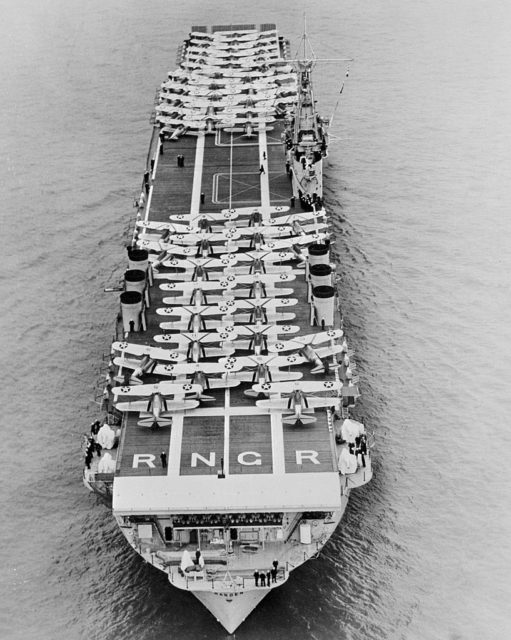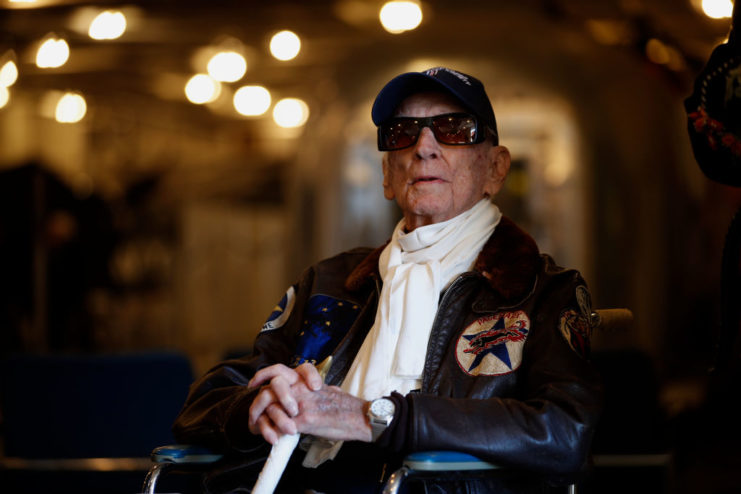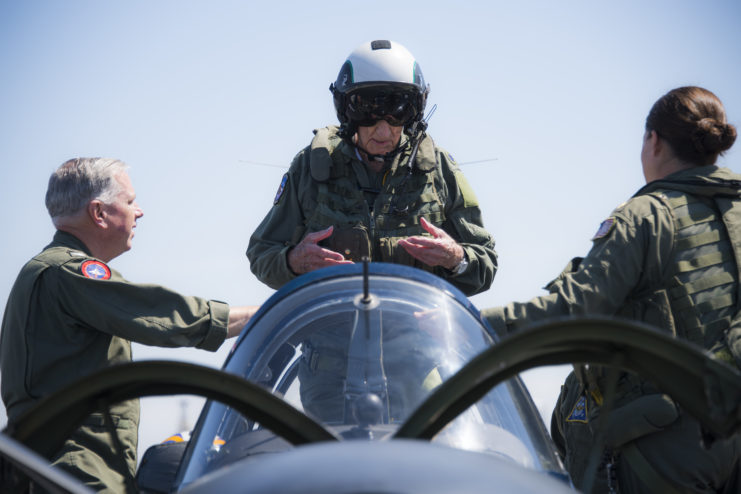There were numerous air aces during the Second World War. These aviators exhibited bravery and courage in the face of danger, earning the status of “ace” upon downing at least five enemy aircraft. While the US Navy had its fair share, only one pilot secured victories against both Japanese and German aircraft. Dean Samuel “Diz” Laird was a naval aviator for the entirety of the conflict, and was credited with 5.75 kills. Two of these were German aircraft, while the remainder were flown by the Japanese.
From San Fransisco to the USS Ranger (CV-4)

Dean Laird was inspired to join the US Navy following the Japanese attack on Pearl Harbor on December 7, 1941. Just shy of his 21st birthday, he traveled to San Francisco to enlist, entering the cadet program. A few months later, he became a commissioned officer and, eventually, a naval aviator.
Laird wanted to be stationed in the Pacific, believing that’s where the service’s air war would largely take place. Instead, he was deployed to Scotland for service aboard the USS Ranger (CV-4), supporting the British Fleet. The aircraft carrier was thought to be too slow for service in the Pacific, so was kept in the Atlantic for the majority of the Second World War.
Laird got quite seasick onboard the carrier and volunteered for as many missions as he could to get him off the vessel. On October 4, 1943, he made his first kills while flying a Grumman F4F Wildcat. He and his squadron were patrolling near Norway when German aircraft were spotted on their radar. Laird’s aircraft was much slower than the rest, so he saw two the others had missed. He subsequently downed the Junkers Ju 88 and Heinkel He-115.
Transferred to the Pacific Theater

Dean Laird returned to the United States following his first tour of duty overseas. He trained on the new Grumman F6F Hellcat, before being transferred to the Pacific Theater. He first served aboard the USS Bunker Hill (CV-17), before being sent to the USS Essex (CV-9) while the former underwent repairs.
On both aircraft carriers, Laird flew in fighter sweeps over Japanese occupied territory in the Philippines and China, where he obtained the remainder of his credited kills. He recalled later in life that “it never entered my mind that I would ever get shot down. I thought I was too good.”
He was right, but on one instance did come close to losing his life.
In December 1944, Laird’s dive bomber squadron was attacked over the Philippines by Japanese anti-aircraft weaponry, resulting in damage to his radio and rudders. He made it back to his fleet some 250 miles away, but realized his landing gear wouldn’t drop. The naval aviator managed to land his aircraft by bumping along the deck, only to find his brakes were also broken. Thankfully, the crew managed to stop it by slipping chocks under the wheels.
Dean Laird’s life following the Second World War

Dean Laird remained in the Navy after the end of World War II, serving in the first jet squadron in 1947. He went on to fly in both Korea and Vietnam. During the latter, he flew Grumman A-6 intruders from Vietnam to Texas, making 32 trans-Pacific flights. He retired as a commander in 1971, and throughout the course of his roughly 30-year naval career flew a total of 175 missions.
Outside of his military career, Laird had a brief gig as a stunt pilot. He was asked to fly fighter aircraft in the 1970 movie Tora! Tora! Tora!, which was a dramatized version of the events before and during Pearl Harbor. As the lead stunt pilot on the film, he logged over 160 hours of flight time and led his own Japanese dive-bomber squadron. He also helped choreograph the attack on Pearl Harbor depicted in the movie.
Dean Laird was the ‘quintessential fighter pilot’

Dean Laird holds an impressive list of awards and accolades from his time with the Navy. These include, but are not limited to, the Audie Murphy Award, the Congressional Gold Medal, the Distinguished Flying Cross and a Meritorious Service Medal.
Laird is also honored in two different halls of fame: one at the San Diego Air & Space Museum and the other at the American Combat Airman Hall of Fame, in Texas. When he was inducted into the latter, he was called the “quintessential fighter pilot.”
Holding and breaking records

Along with his numerous decorations and achievements for his military service, Dean Laird also holds (or previously broke) a number of records. At the 1949 National Air Races, he flew a McDonnell F2H Banshee based onboard the USS Midway (CV-41) from the Atlantic to Cleveland, Ohio. He won first place while also setting the record for the fastest air speed at that time: 549 MPH.
Laird still holds the record for the most arrested landings on a straight deck carrier, and was the first person to land a jet-powered aircraft on Midway‘s flight deck. Lastly, he is the only US Navy air ace to have scored victories against both Japanese and German pilots during the Second World War.
At the age of 95, Laird broke another, more personal record when he flew his 100th aircraft. He was joined by Lt. Cmdr. Nicole Johnson, and the two of them went up in a Beechcraft T-34C Turbo-Mentor. This was Laird’s first time flying the aircraft and he celebrated by doing a series of aileron rolls.
According to Laird’s daughter, he took his last flight in June 2022 with the help of Dream Flights, an organization “dedicated to honoring military veterans and seniors with the adventure of a lifetime.” He was joined on the flight by US Air Force veteran and WWII triple ace, Clarence “Bud” Anderson.
Dean Laird passed away at the age of 101

On August 10, 2022, at the age of 101, Dean Laird passed away in Walnut Creek, California.
Speaking about her father with The Mercury News, Andrea Laird shared that she continues to be approached by people who flew with her father while he was in the military. “You can live your whole life and do so much good, and really for so many observers it’s just distilled down to one contribution,” she said. “There’s this guy you call daddy and there’s this guy who is this massive figure in some world that you’re not very familiar with.”
More from us: Richard H. Best: The Only WWII Pilot to Bomb Two Japanese Aircraft Carriers in One Day
Laird’s son-in-law, Scott Achelis, echoed this sentiment and added that Laird lived his life in search of his next adventure.
“Everything he achieved, he earned by going out and asking ‘Hey, can I do this?'” Achelis said. “Whether it was being one of the lead stunt pilots in Tora! Tora! Tora! or being one of the oldest guys to fly back from Vietnam after serving [in] three different wars, nobody could ever take that courage away from him.”
